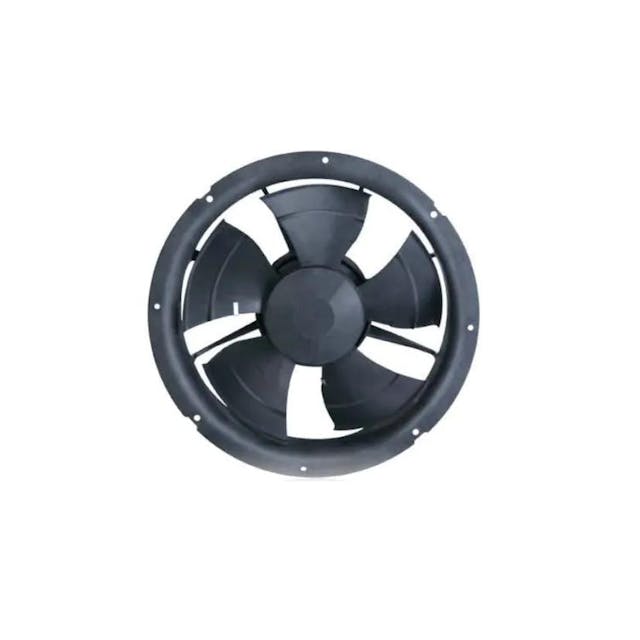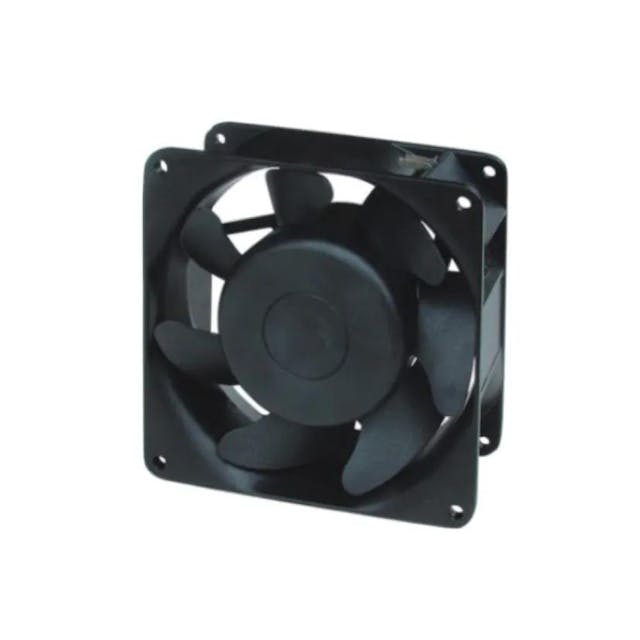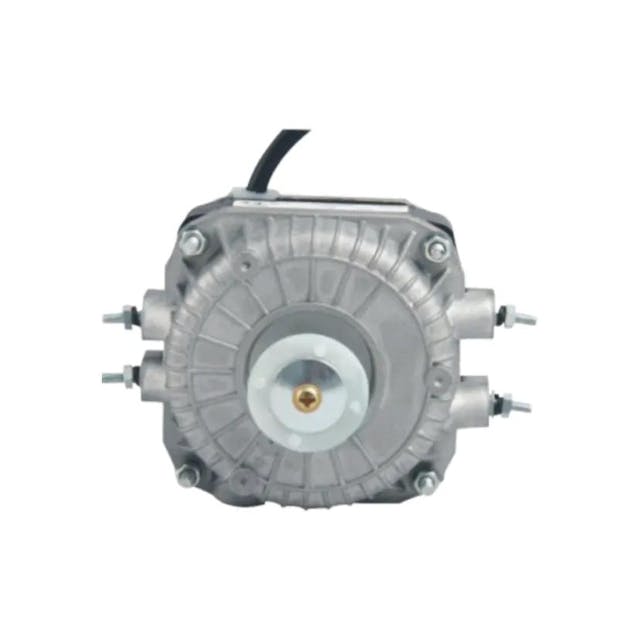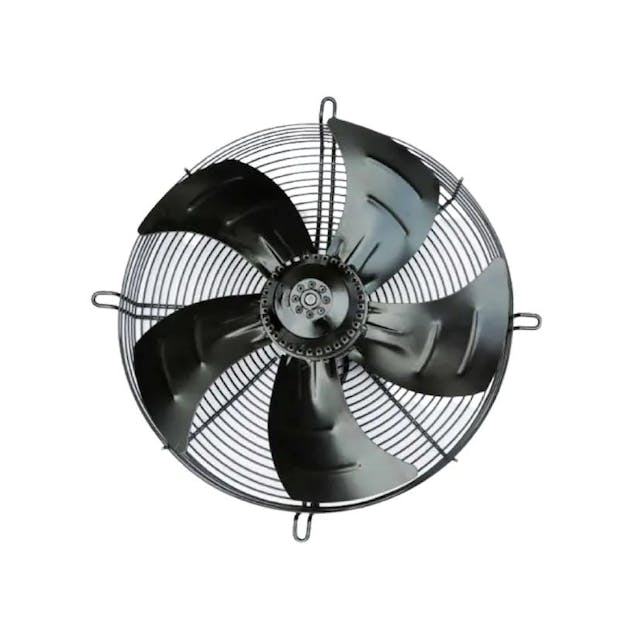
Fan AS-230
suction, propeller diameter: 230 mm, capacity: 400/960 m³/h, remote speed programming (NFC)
A fan is a device whose task is to ensure proper air circulation, or more broadly speaking, gas circulation. They are the basic element of the ventilation system, which is to ensure the supply of fresh air, help maintain the desired temperature and humidity, or remove or reduce the concentration of pollutants floating in the air.
The simplest division that can be made is the one that takes into account the place of installation of the fan. In this case, we can distinguish: wall (wall and ceiling), roof and duct fans.
Considering the purpose, we can divide them into traditional fans, which are used to remove ordinary gases and pollutants, or special-purpose fans, which are used in places where harmful chemical materials are present. The latter are often designed for individual needs, mainly for industries such as chemical or fuel.
Another division that we can make is the one that takes into account the principles of operation of the fan, which result from its construction. There are two main groups here: axial fans and centrifugal fans. We will discuss the characteristics of both products below.
Fans are a key component of any HVAC system. It is hard to imagine an efficient ventilation or air conditioning system without an effective air flow system. The task of an industrial fan is to move a sufficiently large amount of air that cools the room or machines or systems that heat up during their use. Effective management of the ventilation system depends to a large extent on the proper selection of the fan. In order for this choice to be successful, you should be aware of the advantages and limitations of each of the available solutions.
These well-known and common fans with a simple and reliable design are very popular both in industrial solutions and in less complicated ventilation systems (e.g. bathroom fans that ensure effective removal of water vapor from the room).
Without a doubt, the most popular HVAC fan is the axial fan. Another name we can come across is a propeller fan. This is due to its characteristic structure and visible blades. Axial flow fan blades, or in other words axial fan blades, are mounted on a rotating shaft. The drive of the device, i.e. the element that sets the blades in motion, is the motor. The motor of an axial fan is placed in its housing, usually parallel to the direction of air flow
Axial fans blow air parallel to its inlet, i.e. it (air) moves parallel to the shaft around which the fan blades rotate. In other words, the angle between the intake and exhaust air is 180 degrees. The operation of an axial flow fan is often compared to that of an airplane propeller. The propeller blades separate the incoming air, which has different velocities and different pressures above it, which sets the propeller blades in motion and due to this, air is forced in or out.
The axial fan is a device that enables effective and very efficient flow of a large amount of air necessary to cool closed rooms, devices and systems that generate unwanted heat. They come in many sizes, which makes it easier to choose the right fan for the requirements of the system in which it is to be used. In our offer you will find axial fans in sizes from 80mm to 910mm and various levels of air flow. These devices require relatively low power consumption, and this parameter is even better when the choice falls on an energy-saving axial fan.
As we have already mentioned, these fans are a popular solution used in refrigeration and ventilation devices. There are many arguments in favor of using axial fans. Below are a few selected ones:
Available on the market in many sizes and with different air flow parameters, axial fans are able to generate not only the right amount of air, but also, thanks to the blades, ensure its even circulation.
The design of the axial fan is not complicated, so that in the event of a failure, the source of the problem is easy to identify and repair. It is not without significance that a wide range of spare parts for axial fans is available on the market, including fan motors, propellers and guards, which can be replaced with new ones if necessary.
In most cases, these fans are made of aluminum, making them relatively lightweight. At the same time, their durable construction with a compact structure and small volume can ensure effective and efficient air flow. Some manufacturers use additional protection for the propellers, rotor or mesh, in the form of powder coating of the mentioned elements. Such a solution can be found, for example, in Airvent axial fans, thanks to which the device is much more resistant to mechanical damage, corrosion or discoloration.
Axial fans allow you to easily change the fan speed. It is even easier in axial fans with the possibility of remote programming of the NFC speed, which allows for remote correction of the rotational speed.
Also known as a centrifugal fan (we will also use these names interchangeably). Unlike axial fans, they can be classified as high-pressure fans. This feature is the result of the construction of the device housing.
These devices have a characteristic spiral shape of the housing, resembling the appearance of a snail. The centrifugal fan is equipped with an impeller mounted on the drive shaft of the fan motor. Air movement is at a 90 degree angle. The air is discharged perpendicular to its inlet. Earlier we mentioned that these devices are referred to as high pressure (or constant pressure) fans. This is due to the fact that the air is compressed in the casing of the centrifugal fan, thanks to which, compared to axial fans, they produce a constant and high-pressure air stream.
These fans (compared to axial fans) deliver a small amount of air, but they are perfect for systems where its flow takes place over relatively long sections. This is the effect of the constant and high pressure they are able to generate. Like axial flow fans, they come in many sizes, which allows you to choose the right size and capacity of the fan for the needs of a specific system. Centrifugal fans, in most cases, consume larger amounts of electric energy, but recently, solutions such as energy-saving ECM motors and energy-saving centrifugal fans have appeared on the market more and more often.
We hope that the information contained in this article has at least brought you a little closer to the principles of operation of fans. We are aware that we have not been able to collect and provide all the necessary information here, so if you have additional questions and/or are looking for high-quality fans, we encourage you to familiarize yourself with our products and contact our Sales Department.

suction, propeller diameter: 230 mm, capacity: 400/960 m³/h, remote speed programming (NFC)

suction, propeller diameter: 300 mm, capacity: 2400 m³ / h

single speed 12W for condenser, evaporator, cooler

blowing, propeller diameter: 120 mm, capacity: 71m³/h

for condenser, evaporator, cooler with a capacity of 34W

Powered by the ECM7108 engine

suction, propeller diameter: 630 mm, capacity: 11695m³/h